What is 432 Hz and is There Substance Behind the Claims?
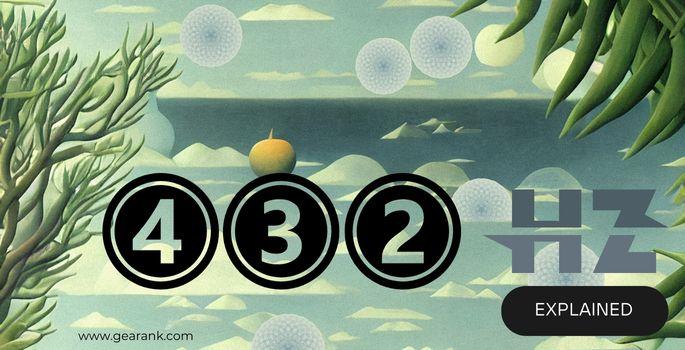
Music history is a treasure trove of endless questions. Which comes first, "music theory or the music playing?" Is music theory gospel or is it just a rule of thumb for a better composition?
Nothing is more contentious than the topic of standard tuning. If I want to open a Pandora's box when talking to colleagues, I just need to start a sentence with, what is 432 Hz…
The subject of tuning to 432 hz has been a hot topic for years. Proponents of tuning at 432 hz claim that it is the natural vibration or frequency in which the world resonates.
Music, after all, is made up of frequencies and vibrations. Shouldn't we calibrate musical instruments to match a meditative frequency?
In this article, we will do a cross-examination of what 432 hz is.
We will also verify:
-
Does it align with the earth's frequency?
-
Are there studies about its purported physiological effects?
-
What are the practical uses of tuning in 432 hz?
A Quick History of the Standard Tuning
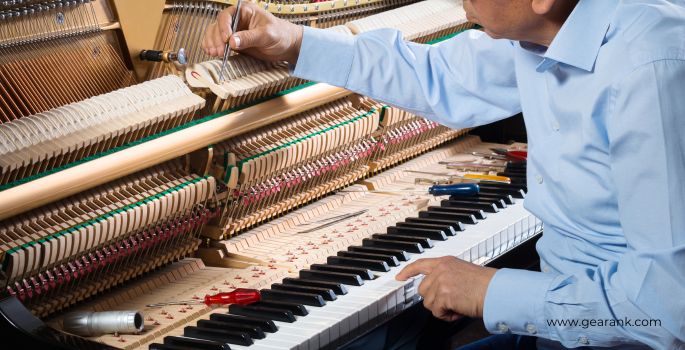
To know what 432 hz is, we have to do a quick dive into the history of standard tuning.
Back in the day, musicians across different regions had a standardized pitch for tuning musical instruments.
Every country or region had its arbitrary reference pitch. It varied widely across Europe. France was known to tune their instruments around 435hz, while Italy used 432 hz.
Even composers tuned in different frequencies. The pitch reference for Mozart's pianos is at A=421.6 hz. The tuning fork belonged to the German piano craftsman, Johann Andreas Stein.
The most renowned of all composers, Guiseppe Verdi, had his music tuned at 432 hz. It's known as "Verdi Tuning." But not all used the Verdi Tuning system.
At that time, the lack of universal pitch reference made it difficult to collaborate seamlessly with musicians from other regions.
But in 1834, the German Academy of Sciences pushed forth the 440hz as a German national standard and the music world began picking it up only until 1926. This played a key role in the rise of 432 hz of tuning standards, which we will come back to later.
This leads us to the standard concert pitch of A=440 hz.
With standardization came the convenience of seamless collaboration.
With this also came the questioning of 440 hz being the standard pitch in the first place.
432 Hz vs 440 Hz

On Superior Tuning
Hertz or Hz is a unit of measurement of frequency that measures a sound wave's cycles per second. A higher pitch has more cycles per second and a lower pitch has less. Some believe it's a much more stable frequency than 440 Hz.
Proponents of 432 hz believe that this frequency is in tune with the natural frequency of the earth's background hum. The "earth's heartbeat", or Schumann resonance has been "found to occur at 7.83 Hz for the fundamental frequency." It's been rounded off to 8Hz for convenience.
Effects on Health
Why is 432 hz being argued as the healing frequency? Does the base frequency come with a variety of health and spiritual benefits?
Since this frequency is more in tune with the earth's electromagnetic oscillations it is claimed to promote a sense of synchronicity with nature. Some even purported that it enhances memory, decreases anxiety, ups mental clarity, and lowers blood pressure.
Numerous theories that neural oscillations or brain states can be "entrained" by listening to sounds that specifically target these alpha, beta, or theta states. Ambient, meditation music, binaural beats, and modern music tuned to 432 hz were believed to be able to re-sync the brain for a better mood and improved sleep quality.
Additionally, you'll find articles presenting so-called matches to the frequency of DNA, state that 432 Hz can have a profound impact at a cellular level.
In Pop Culture
Many musicians like the Beatles reportedly tuned some of their songs to 432 hz. Jazz musicians like Duke Ellington, Herbie Hancock, and Esperanza Spaulding tuned some of their songs in this frequency as well.
Are claims regarding 432 Hz true?
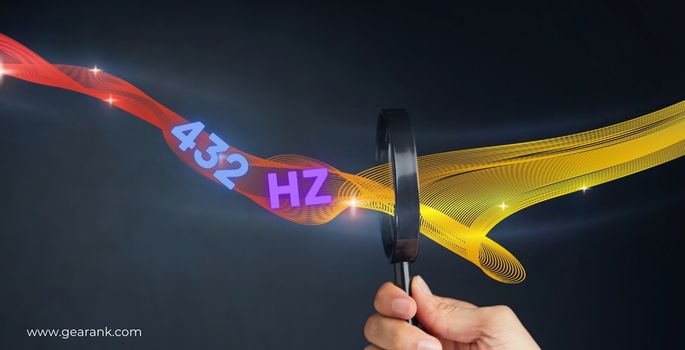
Speculations regarding its therapeutic effects fall under minimal examination when you take into account all factors.
The discovery of Hertz or cycles per second only happened around the late 1800s. Tuning forks before this period were calculated based on the length of their tines. Tibetan bowls and ancient flutes were also rumoured to have been tuned to this magical frequency. However, there hasn't been any historical evidence for this.
This means that no one before this time could've tuned their instruments intentionally to match this frequency.
The earth's resonant frequency fluctuates. The "planet's heartbeat," depending on the frequency scale the overall tectonic activities of Earth, and the movement of heavenly bodies will fluctuate. Going by this logic, 432 hz can promote wellness today and be harmful the next.
Should we now develop a system that automatically adjusts the standard pitch of acoustic instruments based on the earth's fluctuations? Can you imagine how gigs would turn out if that were the case?
Different countries, regardless whether in Europe or Asia, experimented with various pitch references. Because of this, we can't tell for sure that 432 hz is the magic frequency, as proponents claim it to be. The reasons behind different tunings will also vary. Some use it for convenience or musical aesthetics, while others use it spiritually.
Changing the key of a song will render 432hz practically useless. For instance, I'm in the key of C. Every note in the key of C will resonate based on 432hz, its tonal center. That tuning reference will not get carried over if you change the key to D major or others.
Adding effects or detuning to the sound will blur its supposed effects. Especially with electronically-generated sounds, favorite songs require a lot of sound alteration. With these changes, the fundamental frequency would be blurred by extra harmonics or overtones.
Are there some grounded, scientific studies regarding this?
Let's examine some findings of scientific evidence regarding its purported therapeutic effects.
Calamassi and Pomponi's 2019 study suggests that 432hz can slightly decrease blood pressure. However, this study's sample group was made up of only 33 participants. Based on this, the scientific evidence for its therapeutic effects remains inconclusive. The study did suggest running more tests on larger groups.
In 2020, the Scimago study on dental anxiety involved participants listening to songs tuned at 432 Hz. The study found "significantly lower cortisol levels (stress hormones) than the participants who listened to songs at 440 Hz." This study included 43 participants.
Just like the first study, the sample group was small. To prove or disprove the theory, more substantial tests would need to be conducted with much bigger sample groups.
In short, these two studies are simply not enough to make a conclusion one way or another. From a scientific proof perspective, the jury is still out.
Are there practical uses for 432 hz or other tuning?
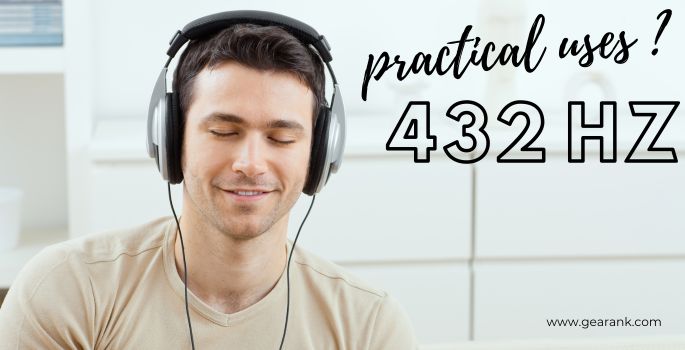
We can separate the wheat from the chaff by discussing its tonal qualities rather than its spiritual effects. Detuning to 432 hz tends to sound warmer and more intimate, with good natural harmonics.
This subjective quality might explain why some people prefer this frequency over 440 hz. And this sounds more reasonable compared to claims that tuning to 432Hz gives you access to the miracle tone that is more inline with the natural world.
As composers, we also want our tracks to stand out from the rest. 432 hz might offer benefits in that regard. Take Smooth Criminal as an example.
Though not tuned in 432 hz, it was detuned slightly higher than 440 hz to create a sense of tension and energy. This small aspect may explain why, when it came out, it sounded unique.
Final Thoughts
"What is 432 hz?" is a topic of contention amongst the music industry. Some vouch for its well being and health benefits, while others are sceptical about its proponents' claims.
The truth is, I lean on the sceptic side. That being said, future significant scientific tuning studies leave me open to changing my opinion.
Therapy benefits aside, I would encourage you to experiment with different instruments and tuning references. There's no right or wrong tuning--just different sounds and colors. This allows room for creative exploration.
Ultimately, different genres offer a broad range of experiences. I can personally vouch for that. Experiences cannot be dictated by a single frequency scale.
Frequently Asked Questions (FAQs)
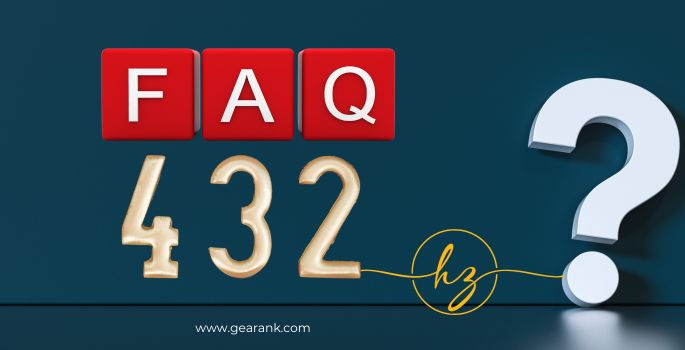
Can Music Being Tuned to Specific Frequencies Affect The Human Body?
It is proven that music affects the mind and body. However, there's not enough scientific evidence yet to prove or disprove the theories of health benefits of specific frequencies.
Anecdotal evidence isn't reliable enough to support it. This Scimago study on dental anxiety suggested that songs played at different frequencies can decrease anxiety.
What Is the Pythagoras Tuning System? Did Pythagoras Tune at 432 Hz?
The Pythagoras tuning system is a musical tuning system made by the ancient Greek philosopher Pythagoras. It is based on the mathematical relationships of the pitch about other instruments using simple ratios.
He claimed that whole numbers are in perfect harmony with nature. However, as a standard practice, changing keys in Pythagorean tuning is proven to be catastrophic. This was further improved by equal temperament.
To date, there's no strong proof that Pythagoras tuned at exactly 432 hz. His theory was based on whole-number ratios. Exploring different tuning systems and their historical contexts can be enlightening.
For a more detailed understanding, you may want to refer to our comprehensive note frequency chart, which provides insights on pitch frequencies and calculation methods.
Can I Switch between Different Tunings during a Performance?
Yes, you can but it will be very difficult if you only have one instrument. The best way to do it is to use multiple instruments already tuned to different tunings. It's better to have different tunings in different songs instead of one.
Contributors:
Allen Articulo - Co-writer
Jerry Borillo - Illustrator












